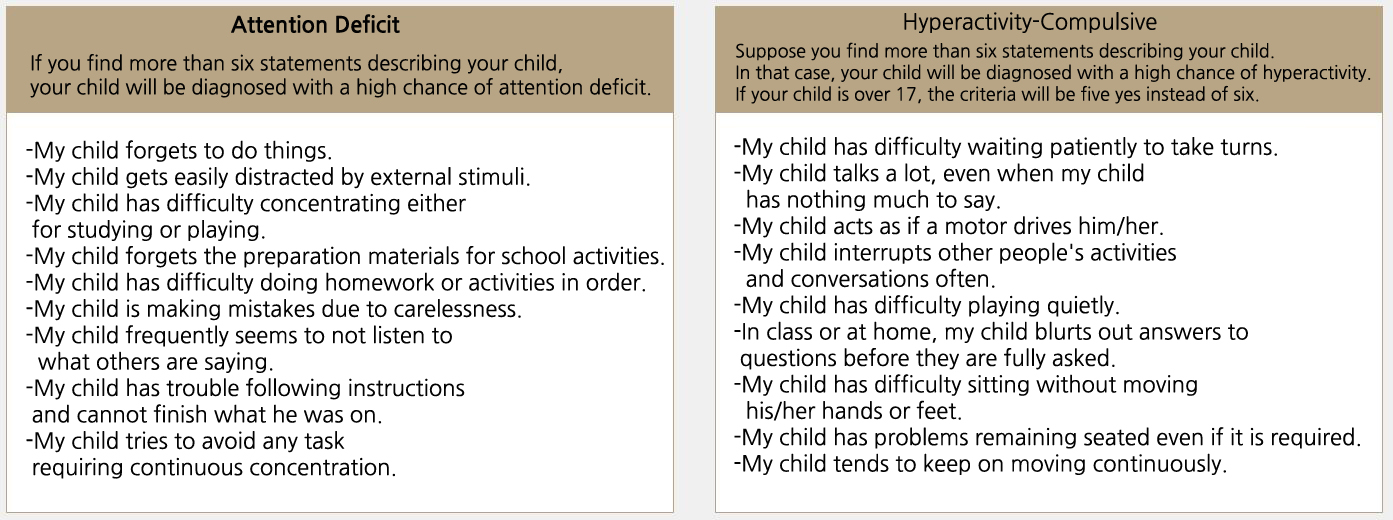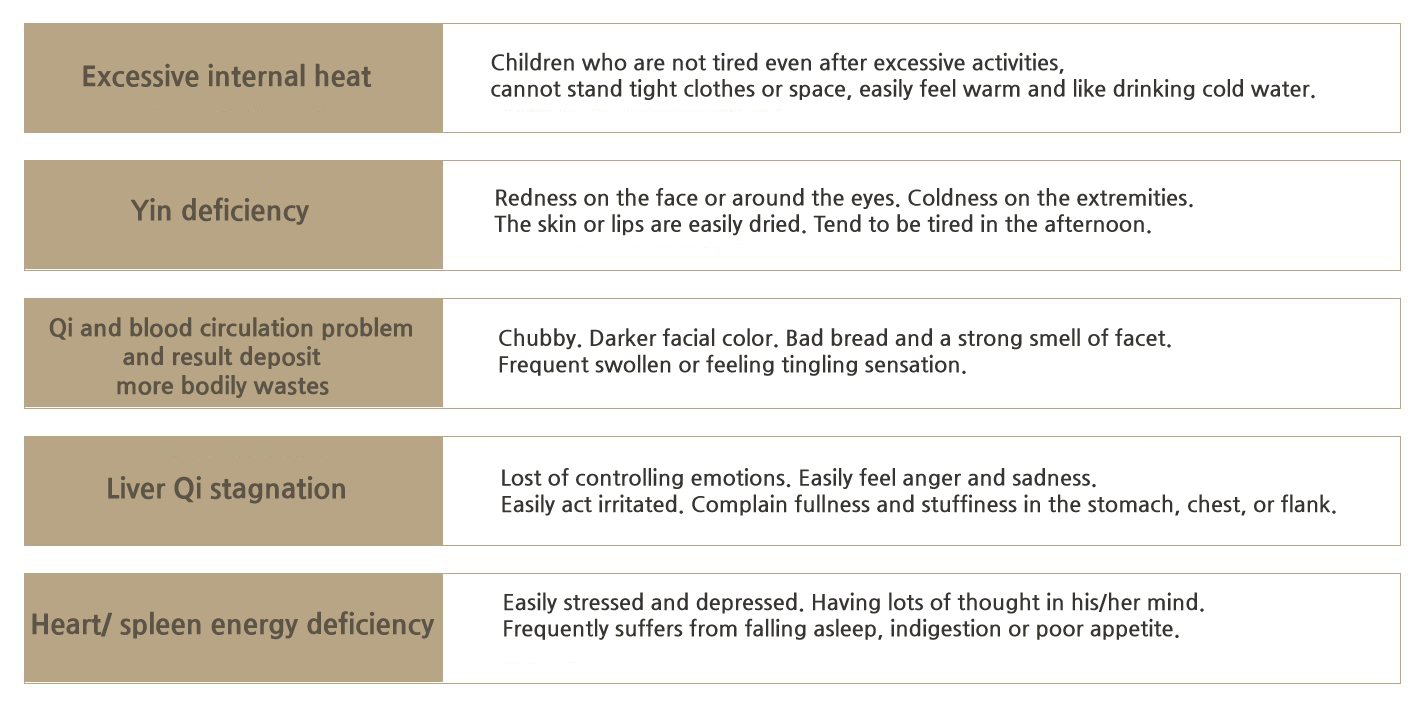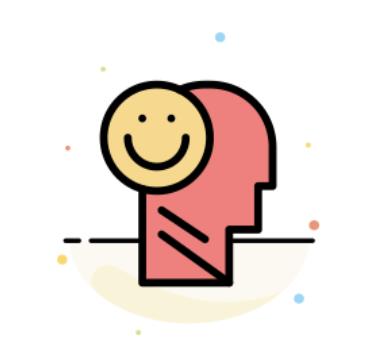 ADHD and tic disorders have rapidly increased recently. ADHD includes a combination of persistent problems, such as difficulty maintaining attention, hyperactivity and impulsive behavior. If the symptom is not treated early, it could be easily aggravated or combined with other symptoms.
ADHD and tic disorders have rapidly increased recently. ADHD includes a combination of persistent problems, such as difficulty maintaining attention, hyperactivity and impulsive behavior. If the symptom is not treated early, it could be easily aggravated or combined with other symptoms.
ADHD is a chronic condition and frequently continues to adulthood. Therefore, early medical treatment is critical.

Childhood ADHD

It has not been known what causes ADHD. The only possible explanation is that a child can control compulsive behavior or emotions due to imbalanced brain development. In many cases, ADHD is combined with other symptoms like tic disorder, major depression and learning disorder. As the symptoms occur, the child experiences an unstable state of mind, causing attention deficit and hyperactivity.
The treatment plan will include close monitoring of problematic behaviors that bother studying and playing with other children and providing treatment to keep the child’s brain in balance.
ADHD self-tests
ADHD tends to onset before the age of seven. If a child shows behavioral signs such as trouble with attention, compulsive behaviors or hyperactivity, it is worth suspecting ADHD.
*This questionnaire is designed to determine whether your child demonstrates symptoms similar to those of ADHD. If you answer more than six yes, consult with Hamsoa or another licensed mental health practitioner


Causes of ADHD, Asian Medicinal Point of Views.

Childhood ADHD needs longer treatments and care from the family.

Childhood ADHD shows symptoms like having trouble falling asleep or frequently crying due to the hypersensitive to stimuli and environmental changes since the infant period. In schools, the children have problems remaining seated and acting as if she/he is driven by a motor and difficulty following instructions.
As those symptoms repeat, the children have difficulties building a relationship and affect negative factors to academic achievements. Then, the children tend to have difficulties to have healthy self-esteem.
